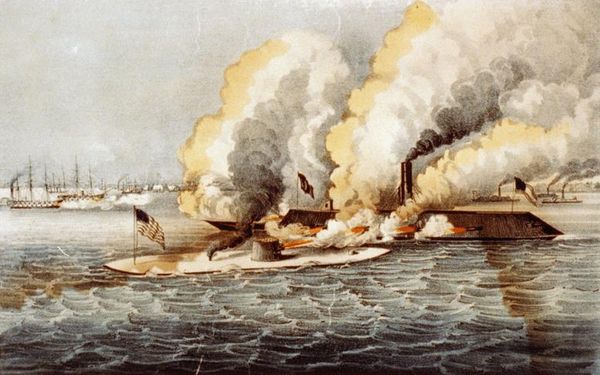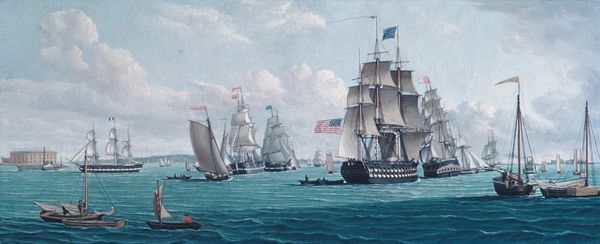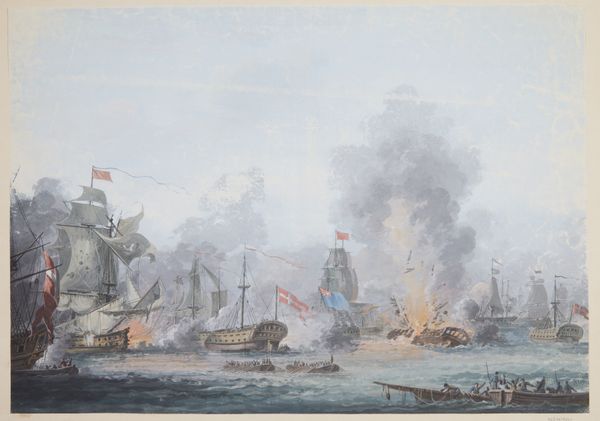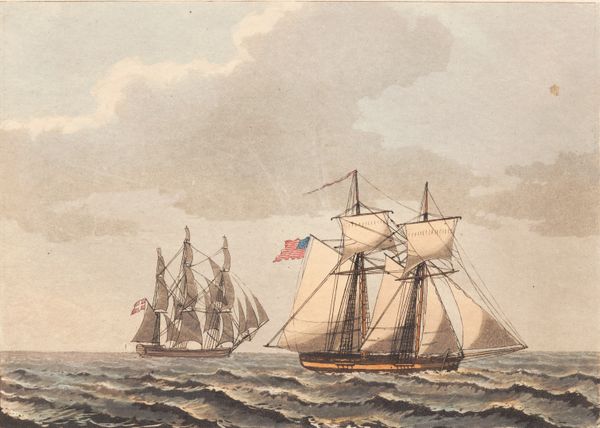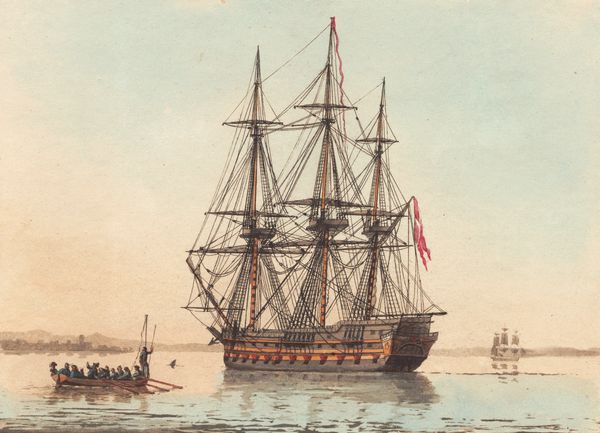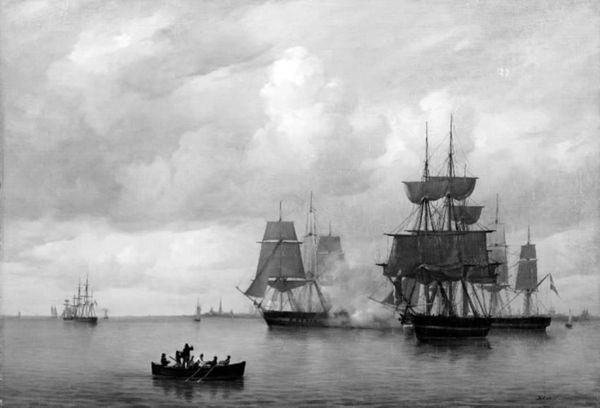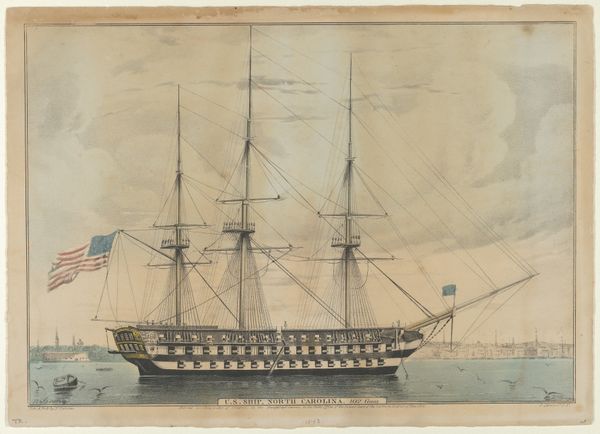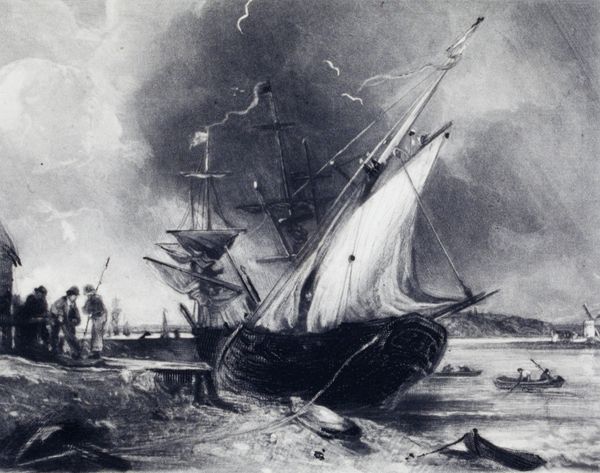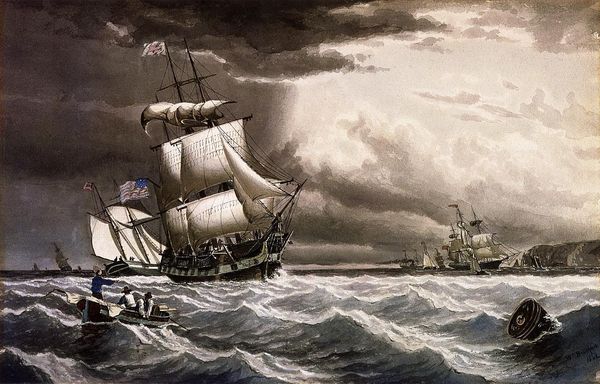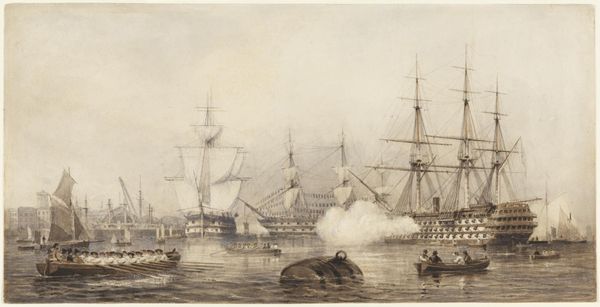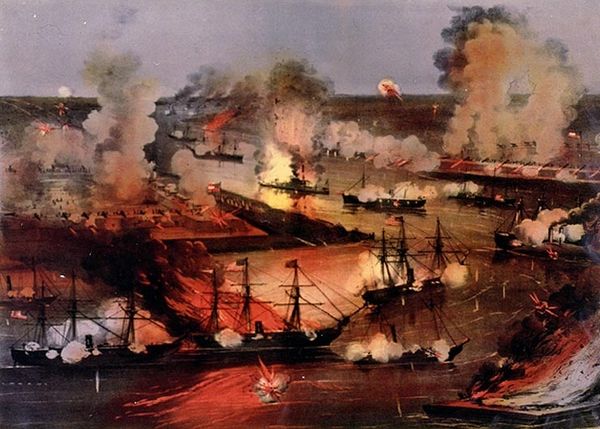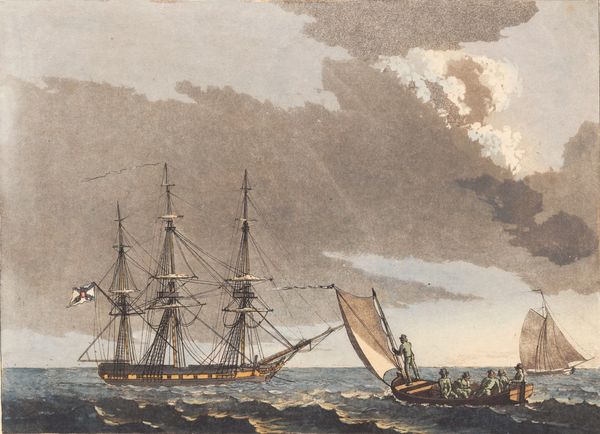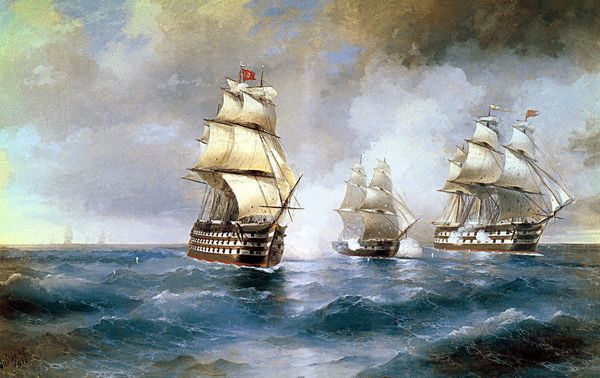
The sinking of the 'Cumberland' by the iron clad 'Merrimac', off Newport News Va. March 8th 1862 1862
0:00
0:00
Copyright: Public domain
Editor: This lithograph by Currier and Ives, dating from 1862, depicts "The Sinking of the Cumberland by the Iron Clad Merrimac." It's incredibly dramatic! The ship is listing heavily, and you can see men in the water. What strikes me is how chaotic it all seems. How do you interpret this work? Curator: The chaos you observe isn't merely a surface impression; it reflects a deeper societal rupture. Images of sinking ships, especially in the context of the Civil War, become powerful symbols of a nation divided, a collective identity in crisis. The *Cumberland*, sinking beneath the waves, represents more than just a naval defeat. Editor: So, it's not just about the event itself, but what it represents? Curator: Precisely. Consider the "Merrimac," an ironclad vessel. Iron represents industrial might, technological advancement, but also the cold, unfeeling machinery of war. Doesn't it seem to signal a shift away from traditional naval warfare and, perhaps, a more brutal phase of the conflict? Editor: That makes sense. The contrast between the wooden *Cumberland* and the ironclad is stark. Was this a common subject for artists at the time? Curator: Narratives of heroism and sacrifice were common, functioning as visual propaganda and nationalistic tools. These images also shaped public memory. Images of war often transcend their immediate context, acting as vessels carrying cultural anxieties, ideals, and historical narratives through generations. Does seeing it this way change how you view it? Editor: Definitely. I see it less as a simple depiction of a historical event and more as a potent symbol of a nation grappling with internal conflict. Thank you. Curator: Indeed, understanding the weight of symbols embedded in historical art like this provides profound insights.
Comments
No comments
Be the first to comment and join the conversation on the ultimate creative platform.
